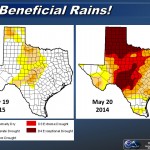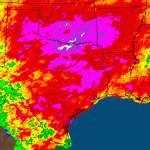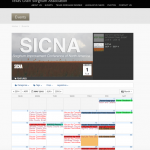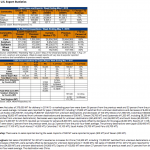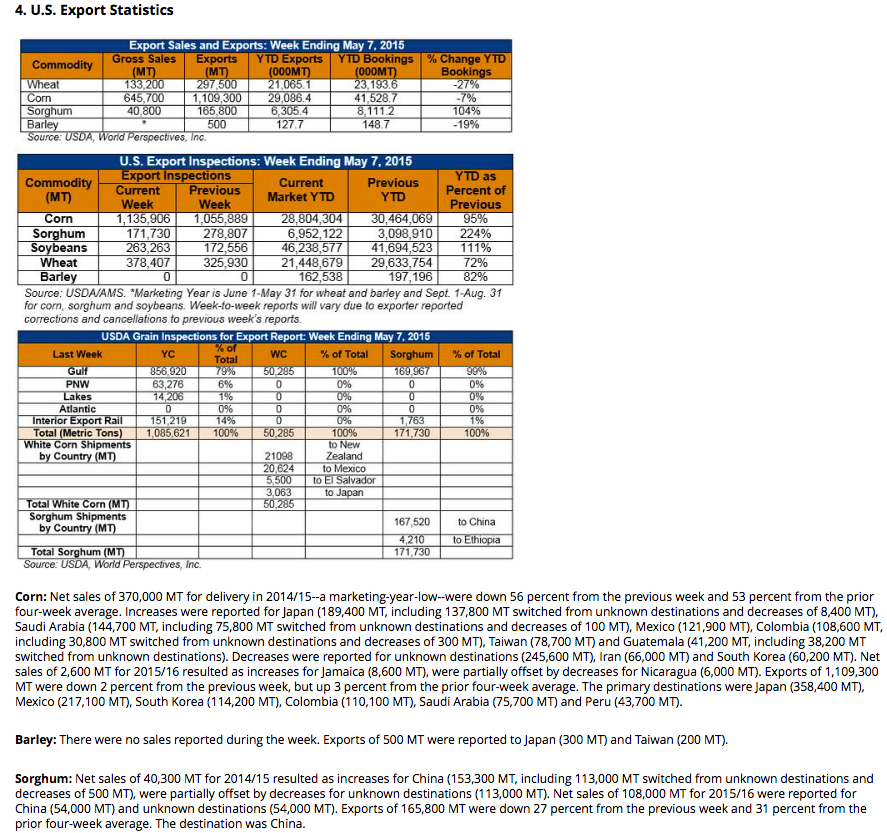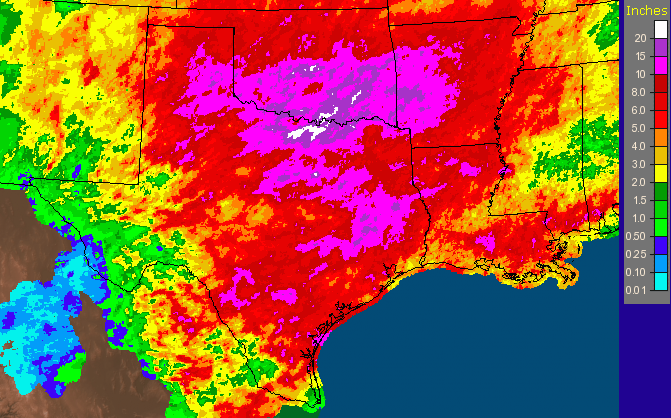New TGSA Online Calendar – Recently, TGSA launched a new industry calendar on its website with the intent of providing producers, industry leaders and friends with a go to location for agricultural information and events. The calendar is geared toward both domestic and international viewers. By highlighting planting and harvest dates for major crops across Texas, the calendar provides international buyers with a better idea of crop status across the state. The calendar also includes sorghum industry events, elevator meetings, field dates, legislative updates and USGC reports among other things. It is our hope that this will serve as an industry calendar for Texas agriculture. As we continue to grow the calendar, if you have an event you would like to have posted on TGSA’s calendar, please contact Katelyn Luckett at katelyn@texassorghum.org. To view the calendar go to http://texasgsa.com/events/.
Weekly Market Perspectives Report – Interested in what the international grain markets are doing week to week? The U.S. Grains Council (USGC) publishes a weekly Market Perspectives Report online. The report offers readers information about current coarse grain markets including price, weather and freight information for buying U.S. grains and their co-products. The most recent report and a list of archives can be accessed at a variety of places online: USGC’s website or on TGSA’s new website calendar. If you wish to receive the report every Friday in your inbox, you can request it by emailing USGC at grains@grains.org.
Sugarcane Aphid Tips – There’s no doubt a pesky bug known as the sugarcane aphid is a lingering worry for most sorghum producers in Texas. Although the pest can be detrimental to a sorghum crop, the Sorghum Checkoff (USCP) believes if producers keep these five tips in mind, damage to fields can be minimized:
- Scout early and often – Justin Weinheimer, Sorghum Checkoff crop improvement director, says the most important aspect in dealing with the aphid is scouting. He encourages producers to scout for aphid presence several times a week, particularly as they near the latter part of the growing season. With early detection of the aphid, producers are able to put in place a scouting schedule and management plan. “Once producers get their scouting schedule set and identify their management plan, they will really be able to get a head start on identifying the issue before it becomes severe,” Weinheimer said.
- A few aphids does not mean crop failure or a need to spray immediately…it means scout more often – When sugarcane aphids are first detected, it is important to remember that a few aphids does not necessarily mean there is an issue. At first detection, Weinheimer said producers should scout further into their fields to see how the aphids have moved within the field as well as into neighboring fields. Producers should continue to scout at least three times a week throughout the season in order to monitor how the aphid is progressing. “I think the first step here for producers needs to be to reach out to their local entomologist expert to let them know they have identified this issue,” Weinheimer said. “Then they can work as a team, as a farm operation, to decide how to go about tackling it.”
- Current spray threshold estimates are 100 aphids per leaf – The recommended threshold for spraying is 100 aphids per leaf on several leaves on a plant, on at least 10 plants across the field. According to Weinheimer, it is important for producers to be able to determine if they are at that threshold as well as determine when to spray depending on where they are in the growing season. “Sorghum can take a high-aphid load, in terms of the number of aphids per plant, before it starts detrimentally impacting yield,” he said.
- The aphid reproduces very fast…do not wait to check back on a field – Scouting becomes even more important once the presence of the sugarcane aphid is detected. Because of the quick reproduction cycle of the aphid, its population can grow from a few aphids to a full infestation within a 10-day period if no action is taken. “In order to accurately gauge what the aphids are doing in the field, producers really have to be checking every three days,” Weinheimer said.
- There are tools available to help prevent and combat this pest – DEKALB, Pioneer and Chromatin announced the addition of hybrids that showed tolerance to the aphid. In addition, Syngenta recently announced approval for Cruiser 5FS seed treatment in 16 states by Section 2(ee) exemption. These companies along with others continue to research additional genetics to introduce to the market. When the aphid population reaches the spray threshold, producers have some options when it comes to pesticides. Transform WG, a product of Dow AgroSciences, is available by state through a Section 18 exemption. Sivanto, produced by Bayer CropScience, is a newly available option with a full label at a reduced rate. Other companies also offer broad-level insecticides that can be used to treat aphids.
To help mitigate the effects of the sugarcane aphid, Sorghum Partners recently announced a Sugarcane Aphid Integrated Pest Management (IPM)program that combines the use of multiple pest control tactics. Weinheimer said producers will continue to see more tools brought to the market in the near future, and the Sorghum Checkoff is actively involved in gaining a better understanding of how to manage it. Currently, the Checkoff is working in collaboration with Dow AgroSciences on a national endeavor geared toward sugarcane aphid control. The Checkoff board of directors invested $350,000 in this project. “The sugarcane aphid, while it has presented some issues in the past, is treatable,” Weinheimer said. “It is possible to have a very profitable crop and do a great job growing grain sorghum in the presence of the aphid.”
Wet Weather Pauses Farming – Texas AgriLife’s weekly crop report can pretty much be summed with the word “wet”. Heavy rains continue to impact much of the state. The coast was pounded with yet again more rain and many fields in the area still have standing water in their fields covering up the sorghum and cotton. There are still areas that have a good crop of sorghum, with early planted fields beginning to head out. North Texas has had lots of rains that have caused flooding, and for the time being, has halted corn and sorghum planting. The sorghum fields that have been planted were showing not to be in the best condition and might have to be replanted once it dries out. The panhandle and high plains areas also saw more rain and are experiencing much colder than average temps which has delayed planting and put everything behind schedule. Because of this, farmers are looking at shorter season corn hybrids and are thinking about replacing some acres with sorghum. Sorghum is also expected to go behind harvested wheat once growers can get in the field to begin harvest. The valley also received more rain but row crops were mostly reported to be progressing well.
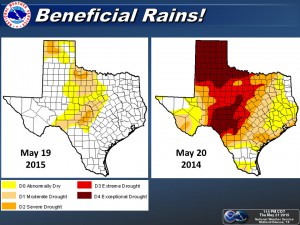
The rains this year have definitely helped the Texas drought index from where we were one year ago today (right).
USDA Invests $6.5 Million to Help Conserve Water & Improve Water Quality in Ogallala Aquifer Region – On May 14, Agriculture Secretary Tom Vilsack announced the USDA plans to invest $6.5 million in the Ogallala Aquifer region this year to help farmers and ranchers conserve billions of gallons of water and improve water quality. Funding will be targeted to seven priority areas to support their primary water source and strengthen rural economies. “This funding assists conservationists and agricultural producers in planning and implementing conservation practices that conserve water and improve water quality,” said Vilsack. “This work not only expands the viability of the Ogallala Aquifer but also helps producers across the Great Plains strengthen their agricultural operations.” Through the Ogallala Aquifer Initiative (OAI), USDA’s NRCS is directing funding in FY 2015 to support targeted, local efforts to improve the quality and availability of this vital water supply. This year’s work is planned in seven priority areas in five states and will continue for up to four years. It will conserve billions of gallons of water per year, extending the viability of the aquifer for multiple uses. This conservation investment builds on $66 million that NRCS has invested through OAI since 2011, which helped farmers and ranchers conserve water on more than 325,000 acres. The Secretary noted that much of the funding invested by USDA has been matched or supplemented by individual producers. To see the complete list of priority areas, click here.
2016 Federal Crop Insurance Deadline – June 1st is the deadline for growers to file an AD-1026 at their local FSA offices in order to be eligible for federal crop insurance. The 2014 Farm Bill requires farmers to have up-to-date and accurate information on file for the Highly Erodible Land Conservation and Wetland Conservation Certificate. Growers who are not in compliance will not receive crop insurance premium support for 2016. If growers already have forms on file they are encouraged to make sure their forms are current and accurate.

